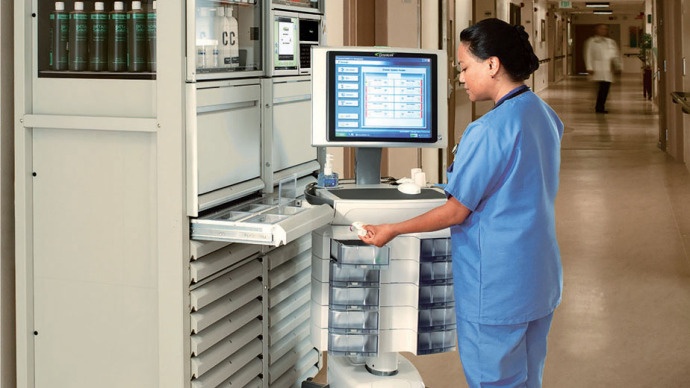
One potential mechanism to improve hospital efficiency and patient safety is the automated dispensing cabinet (ADC). An ADC is a decentralized medication distribution system that provides computer controlled storage, dispensing, and tracking of medications. Hospital pharmacists have been exploring strategies for improving patient safety in the hospital setting, and the ADC – also called an automated dispensing machine – is a good solution.
5 Reasons to Use an ADC
1. An automated dispensing machine provides secure medication storage on patient care units. Most of these machines have locking drawers, automatic counting devices, and secure passwords or keys for access. They also use electronic tracking for narcotics and other controlled drugs. In contrast, stocking narcotics manually in a double locked cabinet leads to under- or over-stocking, drug waste, and missing or inaccurate drug charges. An ADC stocked with controlled drugs that only opens when a specific medication is selected limits access and ensures count accuracy.
2. Automated dispensing machines increase efficiency. They save nurses time by reducing the need for end-of-the-shift medication counts, and they reduce pharmacists’ dispensing time as well. More and more, stocking ADCs will be something pharm techs will be educated to do.
3. ADCs give hospitals the capability to track and proactively monitor drug usage patterns. Reporting capabilities on a machine allows pharmacy staff to track and monitor the appropriateness of medication use, which can reduce inappropriate use by more than 50 percent. Processes like this enhance patient safety by enforcing appropriate use for any high-risk drug.
4. ADCs increase the accessibility of medications on patient care units. This enhances first-dose availability and facilitates timely administration. This feature is especially beneficial in emergency departments and intensive care units (ICUs). The risk of medication errors is higher in these high-pressure environments. Physicians and nurses can more efficiently treat critically ill patients because of the convenient access to meds, with the additional feature of single-access drawers that separate sound-alike medications.
5. Reports can be automatically generated to identify and prevent potential diversion.
In summary, ADCs prevent delays in first-dose delivery, loss of doses, and medication diversion, while also increasing patient safety by providing a good balance of security, accessibility, and inventory control.
Justin Head is Regional Territory Manager for the Northeast. He can be reached at jhead@pocketnurse.com
Source: Do Automated Dispensing Machines Improve Patient Safety?







